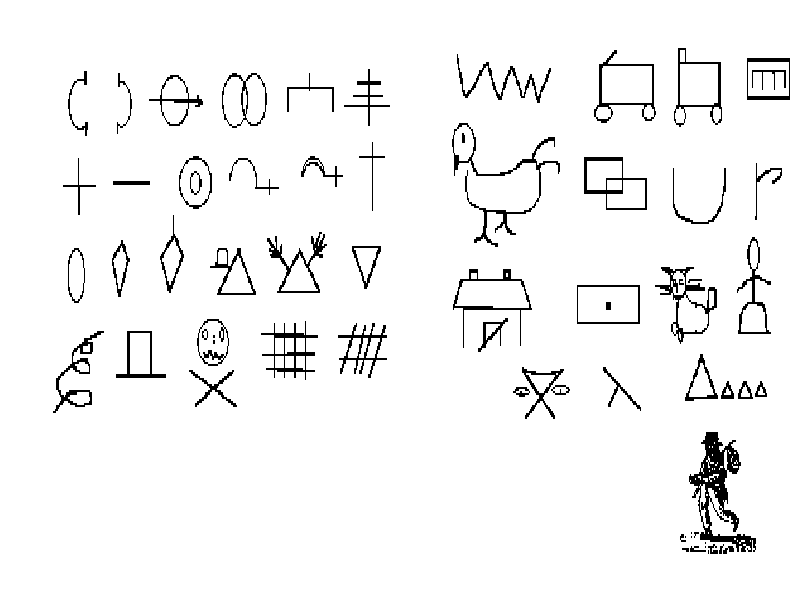
Copyright 1994, 2000 by T. Sheil & A. Sheil All Rights Reserved
You don't see them much anymore. On Halloween, some children would dress in scruffy clothes and a mis-shapen hat, their faces sooty with burnt cork. They would carry a few things in a bandana, tied to the end of a pole. Back then, everyone knew the costume of the hobo. Hobos were people who lived mainly as indigents and vagrants, travelling by sneaking on a freight train. They became "glamorized" as "knights of the road" and "gentlemen of the rails". There aren't many hobos any more. A few have a festival in the Midwest annually, but their ranks have dwindled.
Most major railroad junctions had a hobo camp nearby. Between the turn of the century and World War II, thousands of men took to the rails. Some wanted to go elsewhere to find a better life, but couldn't afford the train fare. Others were migrant workers traveling from job to job. As early as the 1960s, railroads hired migrant workers for their Summer track-work. Many chose to be wanderers and drifters. The song, "Big Rock Candy Mountain", was a hobo song which comically told of a "hobo paradise".
The hobo lifestyle had its ups and downs. Being vagrants, they were not welcome in some places. The hobos often relied on the kindness of individuals. After all, those were the years before Public Assistance. Hazards included railroad "bulls" (police), town police, hostile citizens, bad dogs, and worse. It was not uncommon for railroad police to beat trespassers. In fact, the "bulls" could be very mean in one place, but rather friendly in another.
Hobos kept tabs on places and informed others. Along the way, they developed a set of symbols to pass on vital information. This "hobo keyboard" was meant to be marked with charcoal or chalk. The marks would be left on fenceposts, switchmen's shacks, on the back of roadsigns, and other places. In this way, a hobo could warn his fellows of dangers and tell them of benefits.
Symbols are an odd set of marks to most folks, but accurate messengers to those who understand them. The hobo symbols are simple. They depict essentials of a specific lifestyle. Look them over carefully, and try to figure out how they were developed. Symbols give us clues to our own nature.
By the way, you may have fun trying to figure out how the hobos developed some of their symbols.

Left Half: 1st Row: 1 Out, 2 In, 3 Go, 4 Don't give up, 5 Here, 6 Officer; 2nd Row: 1 All Right, 2 Doubtful, 3 Very Good, 4 Stop, 5 Dishonest or unreliable man, 6 Act religious; 3rd Row: 1 Nothing, 2 Be quiet!, 3 Be ready to defend yourself, 4 Wealth (note top-hat), 5 Man with gun (hands up), 6 Spoiled - gone bad (reverse triangle); 4th Row: 1 Judge (stylized screw), 2 Gentleman (top hat), 3 Doctor (skull and crossbones), 4 Jail (stylized bars), 5 Dangerous place (RR Tracks).
Right Half: 1st Row: 1 Dog, 2 Trolley (contact pole on roof), 3 Railroad, 4 Bad dog; 2nd Row: 1 Telephone, 2 Afraid/Fearful, 3 Okay to camp here, 4 Will care for you if you're ill; 3rd Row: 1 Well-guarded building, 2 Danger!, 3 Kind woman (cat), 4 Woman; 4th Row: 1 Safe camp, 2 You will be beaten, 3 Tell sob story.